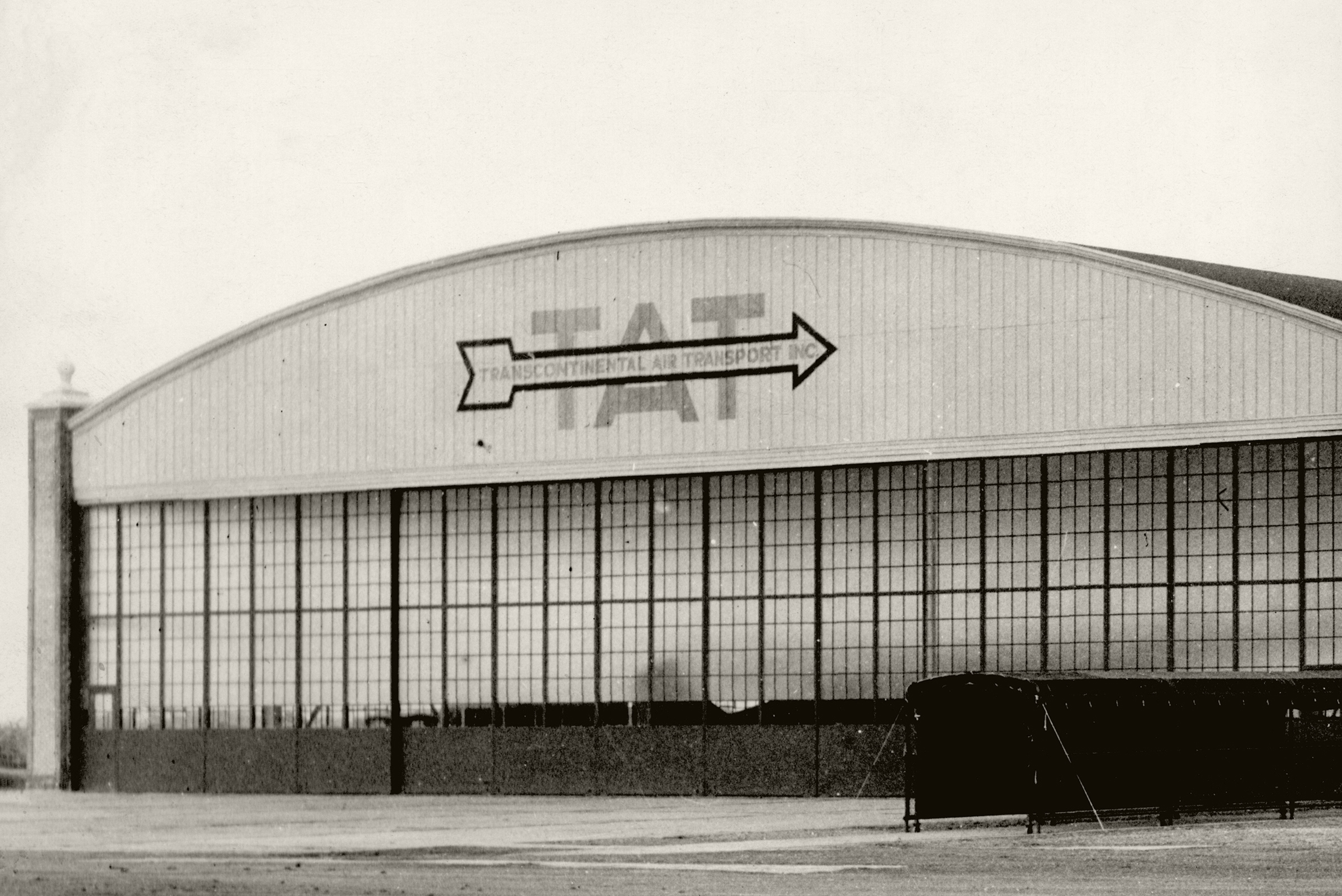The Encyclopedia of Oklahoma History and Culture
TRANSCONTINENTAL AIR TRANSPORT.
In 1929 Waynoka, Oklahoma, became part of an innovative concept in coast-to-coast transportation. The founders of Transcontinental Air Transport (TAT), incorporated in May 1928, were businessmen led by Clement M. Keys, president of Curtiss Aeroplane and Motors Company, and including Charles A. Lindbergh. They envisioned a combined air-and-rail service to take passengers across the country from New York to Los Angeles in forty-eight hours Lindbergh laid out the route, making Waynoka a plane-train stop between Wichita, Kansas, and Clovis, New Mexico. One reason for the town's selection was the presence of a new Atchison, Topeka and Santa Fe Railway railroad yard, a $600,000 improvement project that created the largest railroad yard in Oklahoma at that time. TAT broke ground for the Waynoka airport on March 3, 1929.
Crossing America, travelers would sleep in Pullman cars on trains by night and fly on TAT's Ford Tri-Motor planes by day. On July 7, 1929, the inaugural Pennsylvania Railroad train left New York City with passengers bound for Columbus, Ohio. There on July 8 they transferred to TAT. They made several more stops before arriving at Waynoka where they boarded the Santa Fe train for Clovis. From Clovis on July 9 they flew on TAT into Los Angeles.
TAT brought national attention to Waynoka. Influential people such as Amelia Earhart, Charles and Anne Morrow Lindbergh, Will Rogers, William G. McAdoo (the former treasury secretary Pres. Woodrow Wilson), and Ernie Pyle (a famous journalist later gained renown during World War II) all visited the town. Both Amelia Earhart and Charles Lindbergh held positions within the company.
Waynoka's airport received widespread notice for a number of reasons. Upon completion in June 1929 at a cost of almost $300,000, it contained the third-largest hanger in the United States (after Chicago and Los Angeles) and the most brilliantly lighted landing field in the world. TAT christened one of its airplanes on the line the City of Waynoka, one of seven cities so honored. The company installed the latest technology, including two-way communication between airplanes and ground stations, and at that time was the only air service to employ such methods.
TAT's influence on Waynoka existed for only a brief, twenty-one month period. In the first eighteen months of operation the company lost $2.7 million. In October 1930 the air service merged with Western Air Express to become Transcontinental and Western Airlines (TWA), which announced a new route from Kansas City, Kansas, by way of Tulsa, Oklahoma. This ended operations at Waynoka.
Bibliography
C. M. Keys, "What the Rail-Air Business Means," Pennsylvania Railroad Information (January 1929).
Anne Morrow Lindbergh, Hour of Gold, Hour of Lead: Diaries and Letters of Anne Morrow Lindbergh, 1929–1932 (New York: Harcourt Brace Jovanovich, 1973).
Helen McCabe, Interview by Julie A. Bennett, 1 October 2004, Waynoka, Oklahoma.
Sandie Olson, "Waynoka's Aviation History: Transcontinental Air Transport," Oklahoma Aviator 20 (February 2002).
Donovan Reichenberger, "Wings Over Waynoka," The Chronicles of Oklahoma 65 (Summer 1987).
Transcontinental Air Transport, Inc., T.A.T. Plane Talk (New York: N.p., 1929).
Citation
The following (as per The Chicago Manual of Style, 17th edition) is the preferred citation for articles:
Julie A. Bennett-Jones, “Transcontinental Air Transport,” The Encyclopedia of Oklahoma History and Culture, https://www.okhistory.org/publications/enc/entry?entry=TR005.
Published January 15, 2010
© Oklahoma Historical Society



